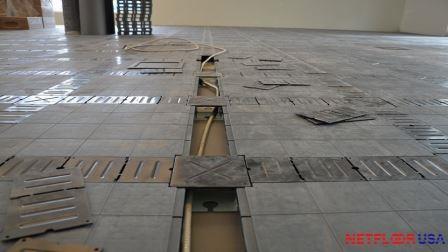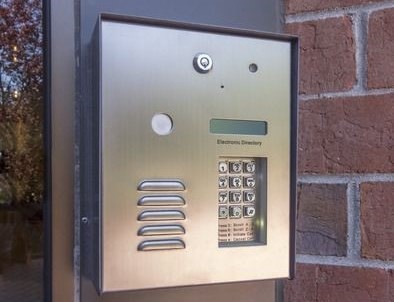Keep Your Data Safe With Access Flooring
When it comes to keeping your data, premises, and company property secure, an ounce of prevention is worth a pound of cure. All it takes is a single breach to cost your organization more than you can afford in terms of money, data, and sometimes even employee safety.
Security is an area where a lot of companies really struggle. Many corporations do not have a full-time employee overseeing security procedures and protocols. Business owners and administrators are stuck with the job but lack the expertise. Even if they come up with sound plans, they are often poorly implemented. They may have the right ideas, but the wrong equipment and personnel to make them work.
How can you make sure that your corporation’s grounds, property, and data stay safe? Here are 5 essentials that a lot of companies miss.
1. Formalize Your Plan as a Part of Corporate Culture
One of the first big mistakes that a lot of corporations make when implementing security measures is not starting with a formalized plan.
Formalizing a plan means writing it down. It means going over it again and again in search of loopholes—and it means making it an official part of how your company does business.
Everything you do to protect your business comes back to your employees, especially when it comes to data security. When you come up with a formal security plan and a complete set of protocols, you should include it in your new employee handbooks. Go over your procedures as part of your on-boarding program. Conduct periodic staff meetings to review access control and data security protocols.
Here are a few things to keep in mind when you are formalizing your plan:
● Your plan should help to facilitate business, not stand in the way of conducting it. There will always be some risk involved.
● You need to work collaboratively with your employees. Oftentimes when employees resist a particular procedure, there is a good reason. You may think it is just laziness, but quite often there is a genuine inconvenience. If you can, get feedback from employees and let them tell you how security procedures could be improved.
● Teach the basics. Never assume employees understand security procedures that you believe are simple. Go over everything time and again to make sure that it is clear and everyone knows what to do.
When you have a formal plan, you close security loopholes and ensure staff follow-through. You also mitigate the risk of litigation when something does go wrong. When you collaborate with your employees, you send the message that you value their feedback. This helps to make security part of corporate culture—something that everyone can be proud to be a part of.
2. Wired Networks with Raised Access Floors

WiFi may be convenient in your offices, but when it comes to data security; it is a gap that hackers can easily exploit. For this reason, your company may want to opt to stay away from WiFi and stick with wired networks instead using Cat5 cables.
This is a move more and more companies are making as concerns about cybersecurity grow. There was a time when it was difficult to maintain a wired network without having cables running all over the floor, but raised access floors have evolved tremendously over the years and can now be integrated seamlessly into any architecture.
Cable Management Floors a next-generation raised access floors. Measuring up at a mere 1.5" tall, cable management floors allow access to wires and cables without moving the floor panels.
Corporations can run their wires under the floors and enjoy the same unobstructed setup they did when they used WiFi. There are no tripping hazards, and convenient access panels make it easy to change your setup whenever you need to. Most importantly, your data will be less vulnurable to physical attacks and your corporate network won't be vulnerable to WiFi attacks.
3. Access Control

Security for your premises starts with access control. This means setting up equipment and procedures that ensures only the right people are getting into buildings, rooms, and safes. Access control stops outsiders from entering company grounds, and it also helps to prevent internal security breaches.
One mistake a lot of corporations make with access control is micromanaging it. They think that they need to choose one uniform solution for all their buildings and premises. But in reality, it is usually best to allow building administrators to choose their own access control systems. You can provide guidelines and standards, but every building may have its own unique security concerns. That means that security solutions for access control may also differ from structure to structure. This is one area where employee feedback is very important to take under consideration!
4. Data Backups
Where does your company back up data? A lot of corporations simply back up everything to external drives or other servers in the building. But there is a loophole in this procedure. If you back up data too close to the source, you could end up losing both copies. What if someone breaks into your building and compromises both the source data and the backup servers? What if there is a fire or a flood?
Back up data away from the source—a remote server is a great option. Do it regularly, daily if possible. That way even if the worst comes to pass and there is a data breach or your local servers are destroyed, you still have what you need to stay in business.
5. Conduct Regular Testing and Walk-throughs
Finally, one more key thing to remember about corporate security is that it is not something you can “set and forget.” Hackers and intruders are constantly developing new methods for busting through the best access control systems and data security measures. For that reason your corporation needs to evolve fast enough to stay ahead of the game. Conduct regular walk-throughs and tests of your security protocols to make sure that they are still working. Patch up vulnerabilities as you find them and get feedback from your employees.
Keeping your data and buildings protected requires constant vigilance, but with the right measures in place and a corporate culture dedicated to security, you can defend your premises, property, and workers!




 Facebook
Facebook Twitter
Twitter Google+
Google+ LinkedIn
LinkedIn